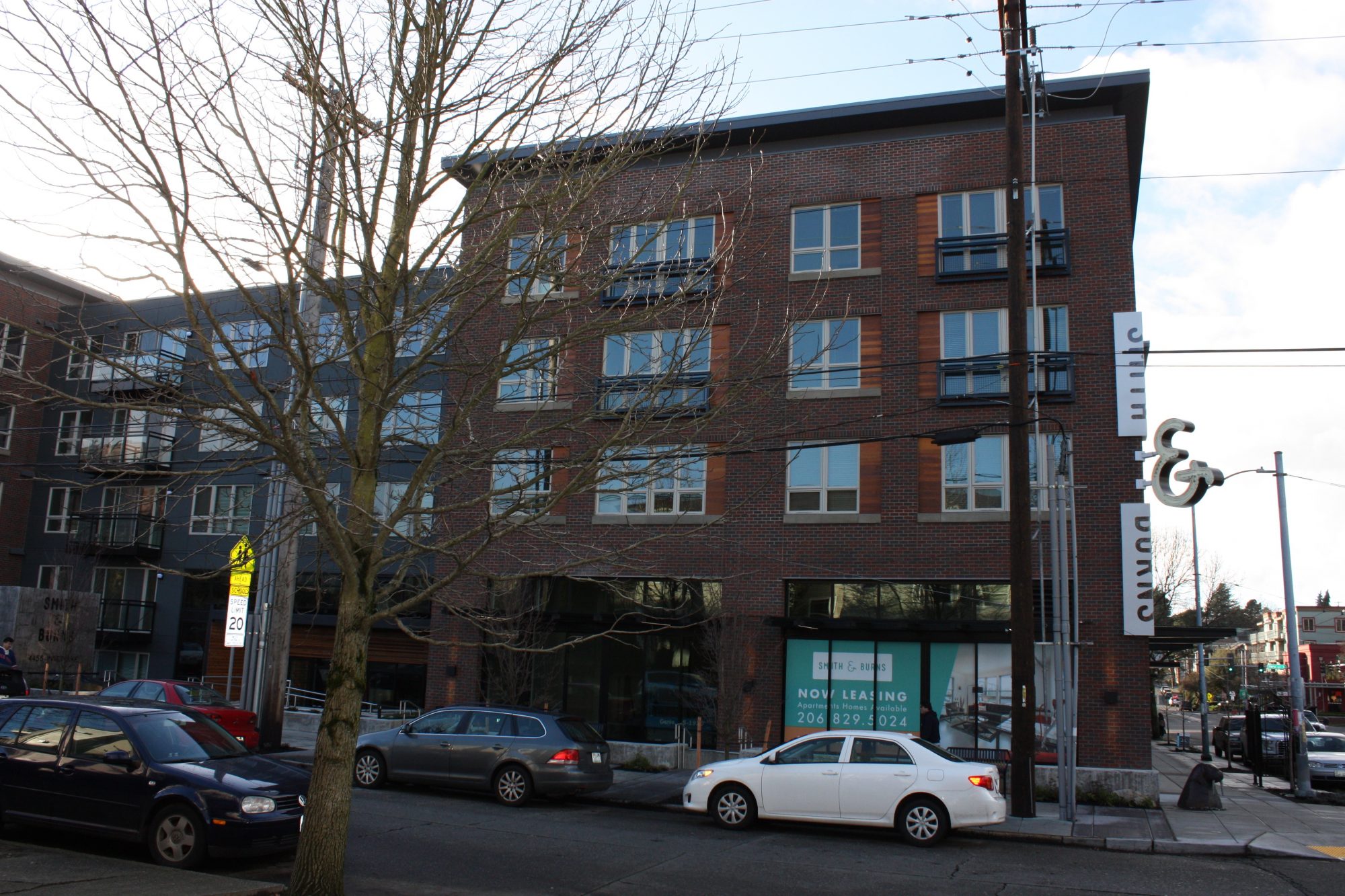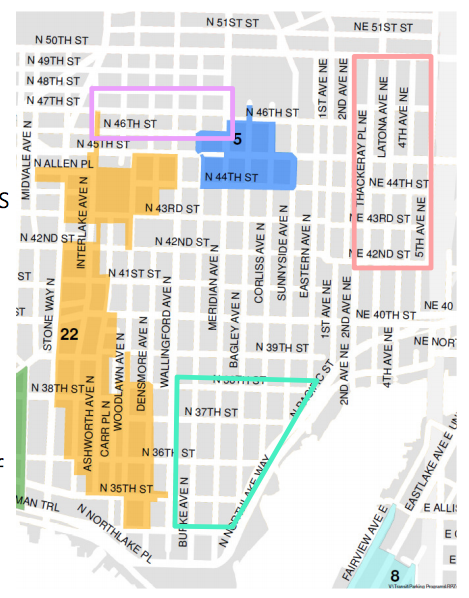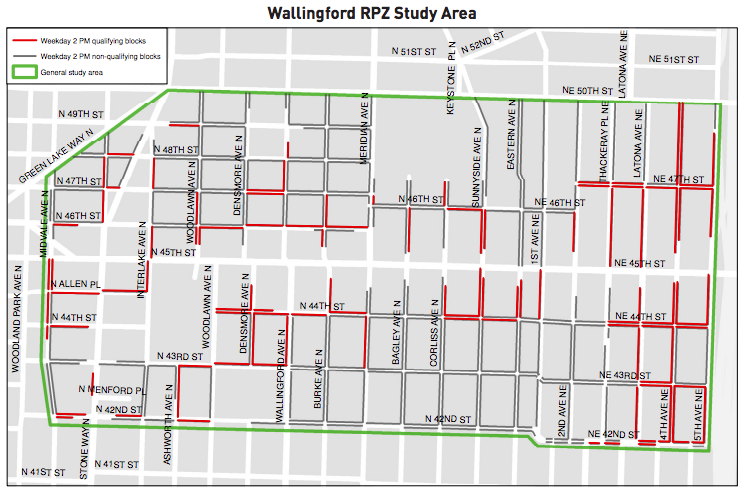
The Seattle Department of Transportation (SDOT) is considering changes to on-street parking regulations in Wallingford. The neighborhood has two Restricted Parking Zones (RPZs), which set time limits on certain blockfaces for non-RPZ passholders. SDOT conducted a parking utilization study in May for over 300 blockfaces in the neighborhood and found that dozens of blockfaces exceeding targets to consider on-street parking regulation changes.

In the past two years, SDOT has received three separate requests for new or expanded RPZs in Wallingford. The RPZ study area, however, was smaller focusing on blocks north of N 42nd St closer to the N 45th St arterial.

As a standard rule, SDOT uses the following criteria to determine if an area could qualify as a new RPZ: 20 contiguous blockfaces must be or exceed 75% parking utilization and at least 35% of parked vehicles must be of non-residents. Analysis from the study shows that most blockfaces on weekdays generally met the criteria, particularly during daytime hours. The following map highlights blocks (in red) during the 2pm hour on weekdays that qualified:

The overall study showed that average parking utilization stayed north of 60% consistently across the neighborhood regardless of time day, though certain blocks in the neighborhood met the RPZ criteria for all hours.
Right now, Wallingford has two separate RPZs: one along Stone Way N (RPZ 22) and another along N 45th St (RPZ 5) east of Burke Ave N. RPZ 22 was initially created in 2005 to partially address parking impacts from Lincoln High School and growing mixed-use nature of Stone Way. RPZ 5 was created much earlier in 1988 to address parking impacts primarily associated with the Guild 45th theater–which is sadly now closed. The parking regulations for both PRZs are generally as follows:
- RPZ 5 completely restricts non-passholders from parking on designated blockfaces from 5pm to midnight each day. The RPZ is generally only located on one side of a street, but occasionally is located on both sides. Blockfaces located on the commercial corridor of N 45th St and some side streets have general time limits as opposed to the RPZ.
- RPZ 22 has two sets of restrictions. Near Lincoln High School, parking is limited to two hours between 7am and 4pm during weekdays. Closer to the Stone Way N commercial spine, parking is limited to two hours from 8am to 5pm during weekdays, except holidays. RPZ 22 passholders are exempt from the time limits. Blockfaces located on the commercial corridors of N 45th St and Stone Way N as well as some side streets have general time limits as opposed to the RPZ.
There is a variety of possible changes that could be proposed, including:
- Changing time restrictions in RPZs (e.g., time limits and hours of restrictions);
- Placing restrictions on one or both sides of a street; and
- Expanding, contracting, or creating new RPZs.
One option that isn’t a typical feature of the RPZ program is creating paid parking blocks. Though that could most be effective for controlling parking demand on Stone Way N or N 45th St where commercial districts are located. None of the streets in the neighborhood currently have paid parking requirements.
SDOT will return with a proposal early next year for public feedback.
SDOT Finalizes Columbia City Community Access And Parking Program
Stephen is a professional urban planner in Puget Sound with a passion for sustainable, livable, and diverse cities. He is especially interested in how policies, regulations, and programs can promote positive outcomes for communities. With stints in great cities like Bellingham and Cork, Stephen currently lives in Seattle. He primarily covers land use and transportation issues and has been with The Urbanist since 2014.

